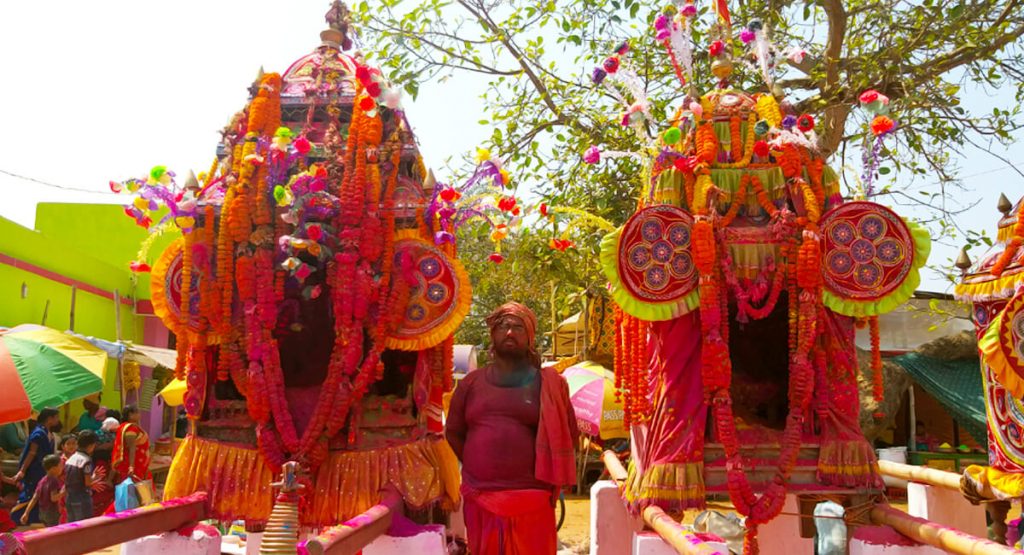India celebrated Holi a few days ago and so did Odisha, but in the town of Harirajpur celebrations were only starting. The occasion was the Dola Festival that is celebrated for five days and involves all the surrounding villages and their respective gods. Also called the Dola Jatra, this festival is celebrated on and after Dola Purnima or as the rest of India calls it, Holi.
Unlike the Dola Purnima celebrations in Puri, which involve Lord Jagannath in the form of Dolagobinda, Dola Jatra in Harirajpur involves Lord Shiva’s temple of Shri Somanath Dola Jatra Dev and four other Shiva temples of nearby villages. Over 100 temples of various gods and goddesses close by also participate in the festivities.
History of the Festival
The history of this festival starts in 1636 when Babaji Gobardhan Das and Nitei Sahu of Harirajpur visited Puri. After witnessing the Ratha Jatra the two villagers proposed Dola Jatra a similar festival involving Shri Somanath Dev of Harirajpur and so the Dola festival was born. As the cost of such an undertaking was great, a decision was made to include all nearby villages. This lead to the inclusion of over a 100 gods and goddesses in the festival that debuted in 1637. The inclusion of five Shiva temples has lead to the festival being called the Panchu Dola Melana.

The Festival as Celebrated Today
During the night of the Falguna Dashami at around 10 pm, one day before Dola Purnima, the idols of all participating gods and goddesses are loaded onto palanquins and a procession of devotees precede them to a prepared ground called ‘Melana padia‘. Dola Jatra This procession is accompanied by bursting firecrackers. Handmade crackers contributed by villagers are used and there is a competition for the most beautiful display. The celebrations continue till early morning. This year over one crore worth of firecrackers were blown up in the celebrations.
You can read our another post on The Leaning Temple of Huma: A Unique Architectural Wonder
Dola festival of Harirajpur is famous for the firework display and the beautifully made palanquins called ‘dola‘s in which the idols arrive. Thousands of devotees attend these festivities every year. The festival is also covered extensively by local news channels.
As we were from western Odisha, we had never participated in this festival. Dola Jatra This was a golden opportunity for us, so we readily jumped at this opportunity.
The first day/night was a delight to watch, with fireworks lighting up the night sky every few seconds and the press of humanity all around us. The procession was accompanied by sankirtana mandalis and Ghoda Nacha. There was a stage set up at the Milana grounds for bands and local singers. Another attraction was the Prahalad Nataka which is becoming quite rare in these times.
The rest of the days of the festival were a lot more sedate, as pujas, yagyas and bhog offerings to the Gods and Goddesses were performed.
However the fifth and last day involves playing with colours among the deities and we did join in. This involved putting small amount of abira (natural dry colours) onto the idols and some for every devotee present during the proceedings.
More: Wanted to download Odishashop.com visit here
On the sixth day, all the idols were carried back to their respective temples by the devotees.
This was a new experience for us as we had never stayed long in eastern Odisha. However, with summer on the horizon, our actual work has begun to pick up. This means more trips around the length and breadth of the state, so expect more travelogues soon from us.
Please comment and share, as that helps us immensely. Till we meet again, thank you for reading.

